Lenovo’s ThinkPad P-series mobile workstations are relatively thin and light laptops with support for professional graphics, among other things. And this year’s lineup includes four new models with Intel Meteor Lake processors and optional support for NVIDIA RTX Ada graphics.
The smallest of the bunch is the new Lenovo ThinkPad P14s i Gen 5 which supports up to a 120 Hz display, up to an Intel Core Ultra 9 185H processor, and NVIDIA RTX 500 graphics. But the most interesting may be the new Lenovo ThinkPad P1 Gen 7, which supports higher-performance graphics, and a screen with an even higher refresh rate. But it’s also Lenovo’s first laptop to feature LPCAMM2 memory.

That means that instead of memory that’s soldered to the mainboard or inserted into SODIMM slots, the laptop has LPDDR5x memory attached to a user-replaceable CAMM2 (Compression Attached Memory Module).
The upside is that LPCAMM2 modules take up less space than two DDR5 SODIMM slots while consuming less power. The downside is that so far there are no LPCAMM2 modules with more than 64GB of RAM. So while Lenovo’s other new laptops support up to 96GB of memory, the ThinkPad P1 Gen 7 tops out at 65GB.
All of the company’s new ThinkPad P series notebooks also have one or more M.2 2280 slots for PCIe Gen 4×4 storage, support for up to a 5MP webcam with an IR camera for Windows Hello-compatible facial recognition, and a set of ports that includes two Thunderbolt 4 ports, HDMI 2.1 and Gigabit Ethernet.
| ThinkPad P1 Gen 7 | ThinkPad P16v i Gen 2 | ThinkPad P16s i Gen 3 | ThinkPad P14s i Gen 5 | |
| Display | 16 inches 91.7% screen-to-body ratio FHD+ IPS, 400 nit, 60 Hz QHD+ IPS, 500 nit, 165 HZ UHD+ OLED, 400 nit, 60 Hz, touchscreen | 16 inches 83.9% screen-to-body ratio FHD+ IPS, 300 nit, 60 Hz FHD+ IPS, 300 nit, 60 Hz, touchscreen FHD+ IPS, 400 nit, 60 Hz UHD+ IIPS, 800 nit, 60 Hz | 16 inches 87.7% screen-to-body ratio FHD+ IPS, 300 nit, 60 Hz FHD+ IPS, 300 nit, 60 Hz, touchscreen UHD+ OLED, 400 nit | 14.5 inches 87.7% screen-to-body ratio FHD+ IPS, 300-nit, 60 Hz QHD+ IPS, 350 nit, 90 Hz QHD+ IPS, 350 nit, 90 Hz, touchscreen UHD+ IPS, 430 nit, 120 Hz |
| Processor | Up to Intel Core Ultra 9 185H | |||
| Graphics options | Intel Arc (integrated) NVIDIA RTX 1000/2000/3000 Ada NVIDIA GeForce RTX 4060/4070 | Intel Arc (integrated) NVIDIA RTX 500/1000/2000/3000 Ada | Intel Arc (integrated) NVIDIA RTX 500 Ada (4GB) | |
| Memory | Up to 64GB LPCAMM2 LPDDR5x-7467 | Up to 96GB DDR5-5600 | ||
| Storage | Up to 8TB 2 x M.2 2280 PCIe Gen 4×4 | Up to 4TB 2 x M.2 2280 PCIe Gen 4×4 | Up to 2TB 1 x M.2 2280 PCIe Gen 4×4 | |
| OS | Windows 11 Pro Linux certified | |||
| Audio | Dolby Atmos Dual mics | |||
| Camera | 5MP RGB + Infrared Privacy Shutter | FHD RGB or 5MP RGB + Infrared Privacy Shutter | 5MP RGB or 5MP RGB + Infrared Privacy Shutter | |
| Ports | 2 x Thunderbolt 4 1 x USB 3.2 Gen 2 Type-C 1 x USB 3.2 Gen 1 Type-A 1 x HDMI 2.1 1 x 3.5mm audio 1 x SD Express 7.0 | 2 x Thunderbolt 4 1 x USB 3.2 Gen 1 Type-A 1 x HDMI 2.1 1 x Gigabit Ethernet 1 x 3.5mm audio 1 x SD Express 7.0 1 x Smart Card Reader (optional) | 2 x Thunderbolt 4 2 x USB 3.2 Gen 1 Type-A 1 x HDMI 2.1 1 x Gigabit Ethernet 1 x 3.5mm audio | |
| Wireless | Up to WiFi 7 Bluetooth 5.3 | WiFi 6E Bluetooth 5.3 4G LTE (optional) | WiFi 6E Bluetooth 5.3 | |
| Battery & charging | 90 Wh (customer replaceable) 135W or 170W power adapter | 90 Wh 135W or 170W power adapter | 57 Wh or 75 Wh 100W or 135W power adapter | |
| Dimensions | 354 x 241 x 17mm 14″ x 9.5″ x 0.7″ | 365 x 262 x 25mm 14.4″ x 10.3″ x 1″ | 362 x 249 x 21mm 14.2″ x 10.1″ x 0.8″ | 326 x 228 x 19mm 12.8″ x 9″ x 0.7″ |
| Starting weight | 1.82 kg 4.03 pounds | 2.22 kg 4.9 pounds | 1.82 kg 4.01 pounds | 1.61kg 3.55 pounds |
| Starting price | $2,619 | $2,279 | $1,859 | $1,829 |
| Availability | May, 2024 | April, 2024 | May, 2024 | Q2, 2024 |





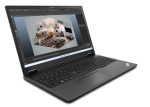
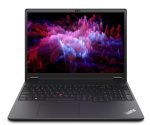
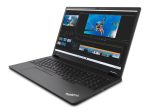

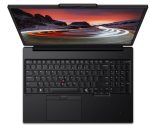
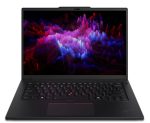
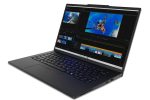
Why do we have to go for a 16 inch laptop in order to get proper performance?
Can’t we get these options in a 14 inch or a 13.5 inch laptop instead?
Well you could, but it would be thick enough to drive an apple fanatic into a more intensely simmering long term spat of self satisfaction, making it difficult to be seen as a decent human being in their eyes without a mac yourself.
A laptop 4070 can be configured to use up to 115W. The Core Ultra 9 185H can also turbo up to 115W. So a laptop needs to either:
have a large cooler and battery, adding weight and volume. You could make the laptop small and thick, but most people who value highly portable laptops care more about weight than about fitting the laptop in a slightly smaller bag or a pokier workspace. A larger screen size also means more chassis surface area to help dissipate heat passively.
limit their power consumption and thus performance. The laptop might have great performance per watt (Nvidia says the laptop 4070 is twice as efficient at 35W than at 115W), but people buying powerful expensive laptops generally want them to perform intensive tasks quickly.
As you can see on table some of those models have 14.5 inches: ThinkPad P14s i Gen 5.
The good point is that a modern 16 inches notebooks is no bigger than a 14 inches notebook was a few years ago, as screen bezels or borders are now very small.
@liliputing_ Ew are they bringing back the atrocious one button trackpad again? I know some other models brought it back but now the P series too?